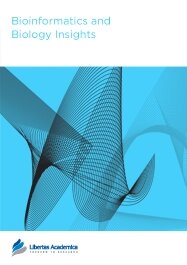

Publication Date: 05 Oct 2009
Type: Original Research
Journal: Bioinformatics and Biology Insights

Reverse transcriptase (RT) is a viral enzyme crucial for HIV-1 replication. Currently, 12 drugs are targeted against the RT. The low fidelity of the RT-mediated transcription leads to the quick accumulation of drug-resistance mutations. The sequence-resistance relationship remains only partially understood. Using publicly available data collected from over 15 years of HIV proteome research, we have created a general and predictive rule-based model of HIV-1 resistance to eight RT inhibitors. Our rough set-based model considers changes in the physicochemical properties of a mutated sequence as compared to the wild-type strain. Thanks to the application of the Monte Carlo feature selection method, the model takes into account only the properties that significantly contribute to the resistance phenomenon. The obtained results show that drug-resistance is determined in more complex way than believed. We confirmed the importance of many resistance-associated sites, found some sites to be less relevant than formerly postulated and— more importantly—identified several previously neglected sites as potentially relevant. By mapping some of the newly discovered sites on the 3D structure of the RT, we were able to suggest possible molecular-mechanisms of drug-resistance. Importantly, our model has the ability to generalize predictions to the previously unseen cases. The study is an example of how computational biology methods can increase our understanding of the HIV-1 resistome.
PDF (4.00 MB PDF FORMAT)
RIS citation (ENDNOTE, REFERENCE MANAGER, PROCITE, REFWORKS)
Supplementary Files 1 (1.95 MB ZIP FORMAT)
BibTex citation (BIBDESK, LATEX)
XML
PMC HTML

We found Bioinformatics and Biology insights very supportive and quick in guiding us in submitting our manuscript. The review of the manuscript was also very prompt. We also found that the review was fair and prompt and that was the most important thing for us. It was a very interesting experience for us. We also liked the video abstract service, which is very novel and encouraging for authors.

All authors are surveyed after their articles are published. Authors are asked to rate their experience in a variety of areas, and their responses help us to monitor our performance. Presented here are their responses in some key areas. No 'poor' or 'very poor' responses were received; these are represented in the 'other' category.See Our Results
Copyright © 2013 Libertas Academica Ltd (except open access articles and accompanying metadata and supplementary files.)
FacebookGoogle+Twitter
PinterestTumblrYouTube